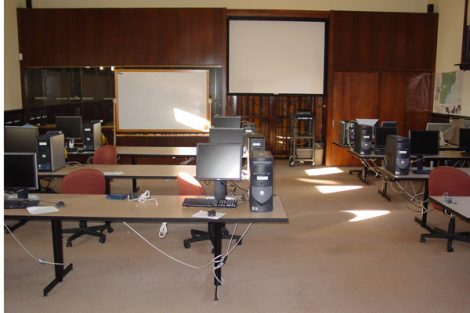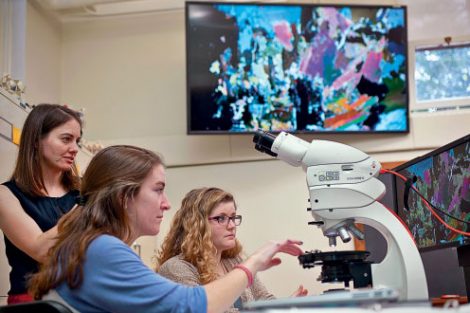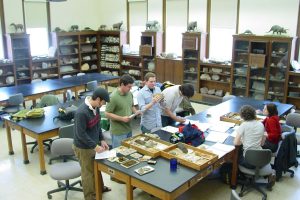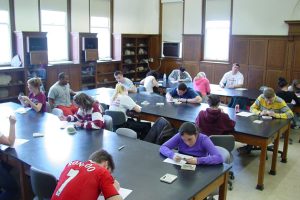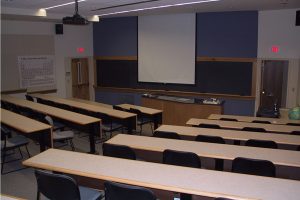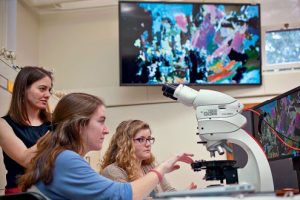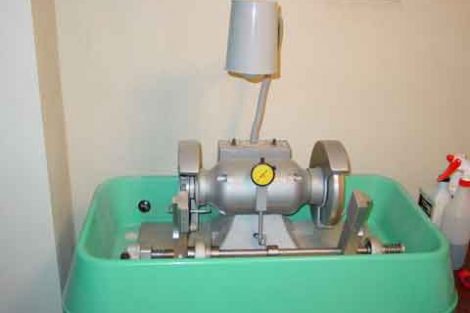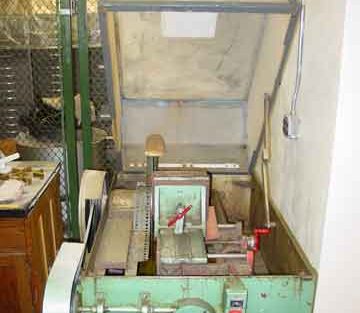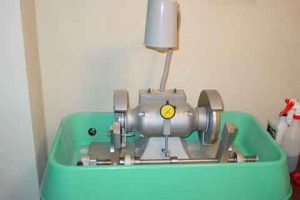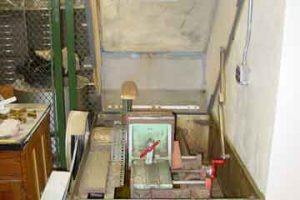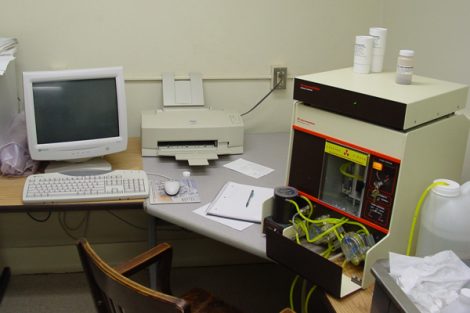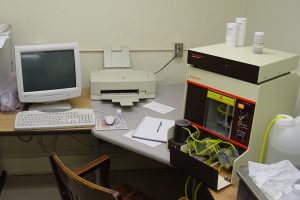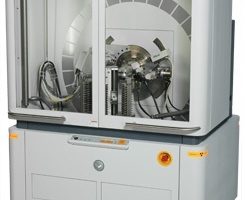Facilities
Facilities in the Department of Geology and Environmental Geosciences are outstanding.
The Department of Geology and Environmental Geosciences is housed in Van Wickle Hall. Our students have full access to the building and its facilities at all hours. We have state of the art computers, geophysical, hydrologic, optical, fluid-inclusion and x-ray equipment. Completely modernized classrooms in the building are outfitted with “smart-classroom” technology. These rooms are equipped with computers, video/DVD players, document cameras, slides, and more. The department also has extensive mineral and fossil collections.
Teaching and Research Facilities
Classrooms
The Department of Geology and Environmental Geosciences has five main teaching facilities. They are: Van Wickle 108, 106, 105, 120, and 15. Room 108 is our main lecture room. Room 120 is our computer lab, and rooms 105, 106, and 15 are our laboratory classrooms. See images of the rooms below.
Geophysics
The geophysics laboratory is home to an array of modern field and lab equipment for the study of the earth.
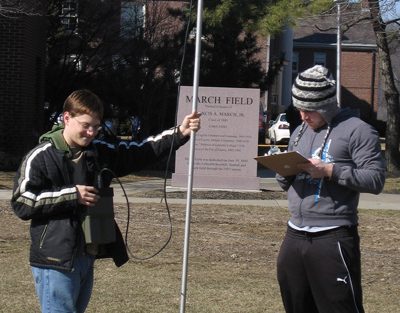
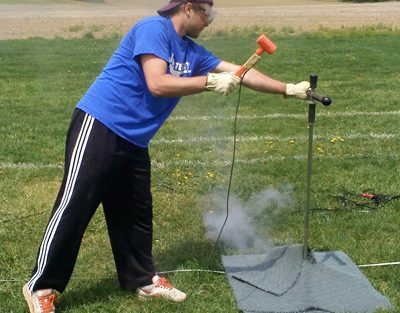
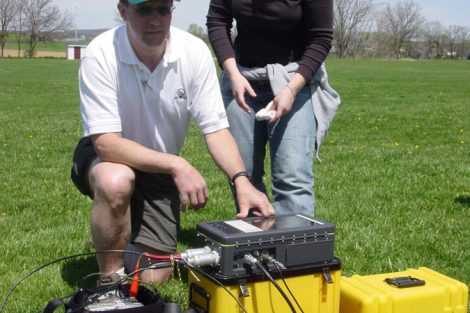
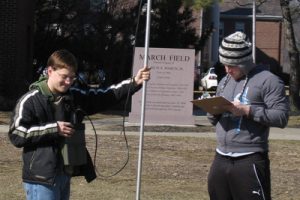
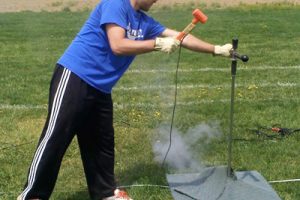
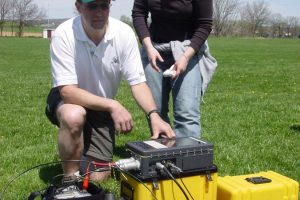
Equipment:
- Lacoste-Romberg Gravimeter
- Texas Instruments Gravimeters
- 24 Channel Seismograph
- Geometrics Proton Precession Magnetometers
- Betsy Seisgun
- Stinger Resistivity Meter
- Modeling and analytical software for geophysical data
Geomorphology/Hydrology
The Geomorphology/Hydrology Laboratory is full of equipment for both field and lab work. Included in the “geomorph” lab is equipment for mapping, groundwater testing, and soil surveying. All of the equipment is used in various introductory and upper level courses.
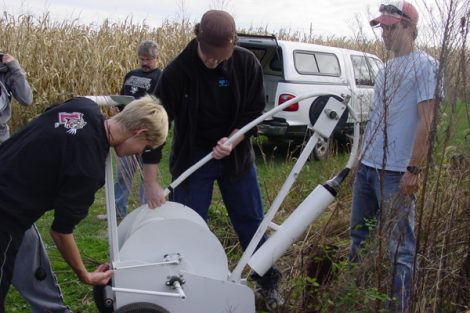
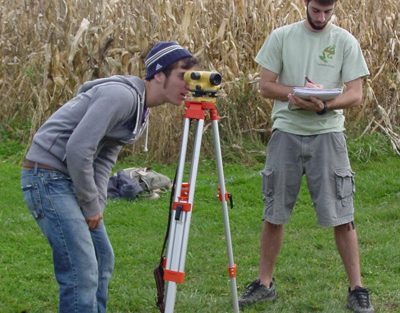
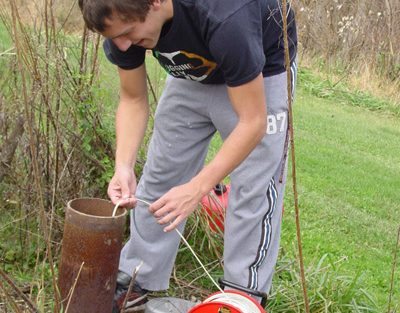

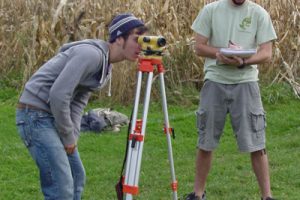
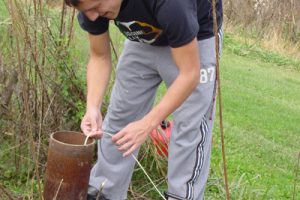
Equipment includes:
- Little Beaver gas powered Auger
- Hand augers and split spoon samplers
- Hydro-Lab Portable water quality Lab
- Generac 5500 Watt Portable Generator
- Port-a-Reel 110 ft Portable Well Pump
- Ott and Marsh McBirney Flow Meters
- 10 Foot Well Test Slug
- Solinst Level Logger Well Logging Equipment
- Total Station
- Chest Waders
- Extensive USGS topographic maps (7.5 min and 15 min series)
Mineralogy/Petrology
The mineralogy and petrology lab houses equipment and materials for the study of minerals and rocks. We house an extensive collection of minerals and rocks for study. Students utilize standard mineral identification techniques, as well as polarizing microscopes for the identification of thin sections. Thin sections are made in-house with our cutting and polishing equipment.
Equipment includes:
- 20 Polarizing microscopes
- 24 inch oil-based rock saw
- 20 inch polishing/lapidary wheel
- Mineral and Rock collection
- 12 inch water-based rock saw
- Hillquist Thin Section Machine
- Mineral and Rock Thin Section Collection
Analytical X-Ray Equipment
Our PANalytical Empyrean X-ray powder diffraction system was purchased with a generous $265,000 grant from the U.S. National Science Foundation. This state-of-the-art instrument is capable of performing a wide range of functions from room- to high-temperature. The main uses of the instrument in the Department of Geology and Environmental Geosciences are for mineral identification as well as student research on the thermal expansion characteristics of minerals utilizing unit-cell determination as the principal tool. The instrument has many additional capabilities, including the study of residual stress, crystallinity, crystallite size, and thin films on a wide variety of materials. This is the principal X-ray powder diffraction system on the Lafayette College campus and is used as well by other academic departments and divisions, including Chemistry, Biology, Physics, and Engineering.
Additionally, a Micromeritics Sedigraph 5100 Particle Size Analyzer is available for the analysis of silt and clay sized sediments.
Keck Hydraulics Laboratory
Through a grant from the Keck Foundation, the Department has been able to install a 9 meter long recirculating hydraulics flume. This device allows students and faculty to model river behavior, examine sediment depositional environments, and create sedimentary bedforms (ripples, dunes, etc). The flume has been used in numerous research and teaching situations. It has even been used to model the dynamics of a river in Honduras for the Engineers without Borders chapter on Campus.
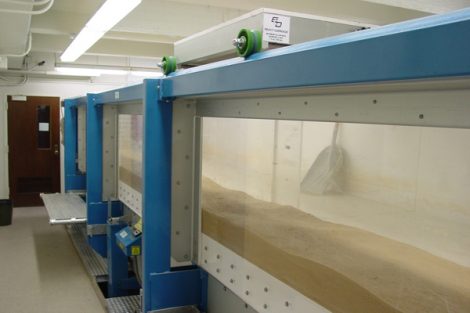
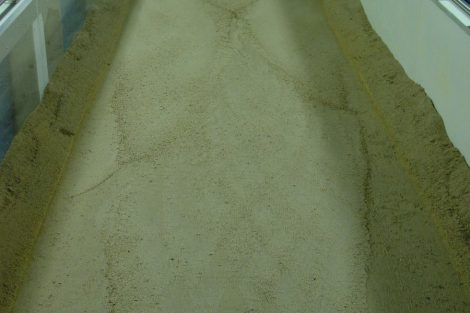
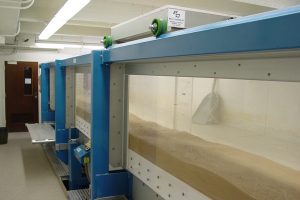

The flume was built and installed by Engineering Laboratory Design Inc. of Lake City, MN.

The 8 tons of sand that are available for the flume were generously donated by Ricci Brothers Sand.

Paleoclimatology
The Paleoclimatology lab facility contains modern analytical equipment to separate alkenones from samples of deep sea muds, and then analyze the abundances of the compounds in them to identify past ocean temperatures.

Professor Lawrence and Laura Bochner ’10 reviewing data
Paleobiology
The paleobiology laboratory houses extensive collections of fossils, including flora and fauna, from locations around the world and close to the College. Highlights include type specimens of tetrapod trackways from the Newark Basin, exquisite plant fossils from Carboniferous rocks of the coal region of Pennsylvania, and reproductions of femurs from Tyrannosaurus, Triceratops, and Apatosaurus. The laboratory includes state of the art equipment for the preparation and imaging of a diverse suite of paleontological specimens. Contact Dr. D. Sunderlin for curatorial inquiries.
GIS/Remote Sensing
The GIS and Remote Sensing facilities in the Department offer a wide range of hardware and software to collect, store, analyze, and display data. The Department computer lab houses 20 PCs with the latest Version of ArcGIS, and ERDAS Imagine.
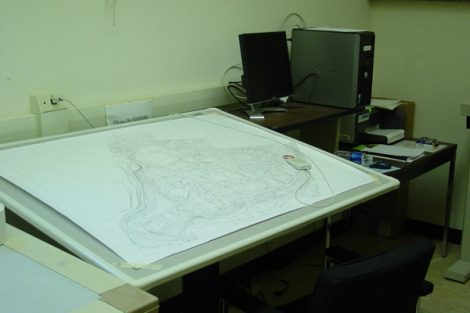
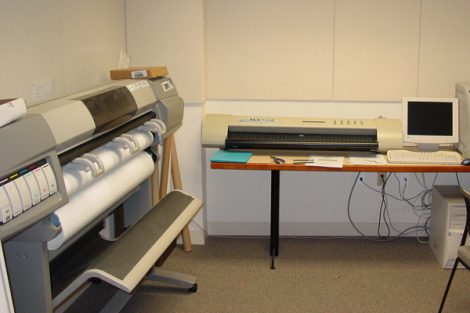

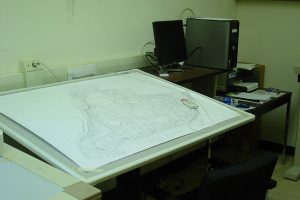
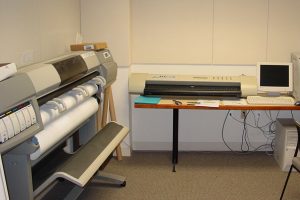
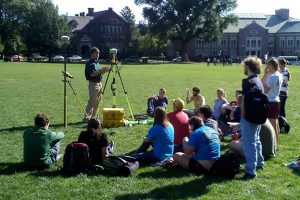
Equipment for use include the following:
- Trimble R-8 Real Time Kinematic Differential GPS system
- Two Thales Mobile Mapper CE GPS devices
- 10 Garmin eTrek GPS devices
- 36″ x 48″ Numonics Accugrid A90 digitizing Tablet
- Widecom 36″ Wide format Sheet scanner
- HP DesignJet 42″ plotter



